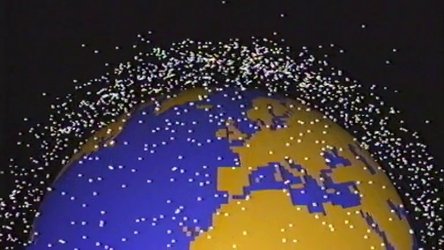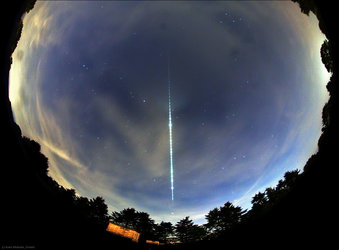Accept all cookies Accept only essential cookies See our Cookie Notice

About ESA
The European Space Agency (ESA) is Europe’s gateway to space. Its mission is to shape the development of Europe’s space capability and ensure that investment in space continues to deliver benefits to the citizens of Europe and the world.
Highlights
ESA - United space in Europe
This is ESA ESA facts Member States & Cooperating States Funding Director General Top management For Member State Delegations European vision European Space Policy ESA & EU Space Councils Responsibility & Sustainability Annual Report Calendar of meetings Corporate newsEstablishments & sites
ESA Headquarters ESA ESTEC ESA ESOC ESA ESRIN ESA EAC ESA ESAC Europe's Spaceport ESA ESEC ESA ECSAT Brussels Office Washington OfficeWorking with ESA
Business with ESA ESA Commercialisation Gateway Law at ESA Careers Cyber resilience at ESA IT at ESA Newsroom Partnerships Merchandising Licence Education Open Space Innovation Platform Integrity and Reporting Administrative Tribunal Health and SafetyMore about ESA
History ESA Historical Archives Exhibitions Publications Art & Culture ESA Merchandise Kids Diversity ESA Brand Centre ESA ChampionsLatest
Space in Member States
Find out more about space activities in our 23 Member States, and understand how ESA works together with their national agencies, institutions and organisations.
Science & Exploration
Exploring our Solar System and unlocking the secrets of the Universe
Go to topicAstronauts
Missions
Juice Euclid Webb Solar Orbiter BepiColombo Gaia ExoMars Cheops Exoplanet missions More missionsActivities
International Space Station Orion service module Gateway Concordia Caves & Pangaea BenefitsLatest
Space Safety
Protecting life and infrastructure on Earth and in orbit
Go to topicAsteroids
Asteroids and Planetary Defence Asteroid danger explained Flyeye telescope: asteroid detection Hera mission: asteroid deflection Near-Earth Object Coordination CentreSpace junk
About space debris Space debris by the numbers Space Environment Report In space refuelling, refurbishing and removingSafety from space
Clean Space ecodesign Zero Debris Technologies Space for Earth Supporting Sustainable DevelopmentLatest
Applications
Using space to benefit citizens and meet future challenges on Earth
Go to topicObserving the Earth
Observing the Earth Future EO Copernicus Meteorology Space for our climate Satellite missionsCommercialisation
ESA Commercialisation Gateway Open Space Innovation Platform Business Incubation ESA Space SolutionsLatest
Enabling & Support
Making space accessible and developing the technologies for the future
Go to topicBuilding missions
Space Engineering and Technology Test centre Laboratories Concurrent Design Facility Preparing for the future Shaping the Future Discovery and Preparation Advanced Concepts TeamSpace transportation
Space Transportation Ariane Vega Space Rider Future space transportation Boost! Europe's Spaceport Launches from Europe's Spaceport from 2012Latest

Spotting debris
Thank you for liking
You have already liked this page, you can only like it once!
On 30 March, NASA astronauts Shane Kimbrough and Peggy Whitson ventured outside the International Space Station on a seven-hour spacewalk. The duo’s work included installing four thermal shields on the US Tranquility module, protecting a docking port.
Unfortunately, one shield was lost during the spacewalk. It posed no immediate danger to the astronauts and they went on to install the remaining shields on the port.
The lost shield is in orbit some distance in front of the Station and is visible from Earth through a pair of good binoculars.
During the evening of 3 April, Marco Langbroek, from Leiden, the Netherlands, photographed the shield passing over in the night sky, using a Canon EOS 60D DSLR camera and a Samyang 1.4/85 mm lens.
In a pair of excellent images created from a series of photos, the shield is seen as the very faint, thin streak (in the image at left), followed a minute later by the Station itself, seen as the thick streak (in the image at right).
The shield is about 1.5 x 0.6 m, and is expected to drop from orbit and burn up in the atmosphere within a few months.
“The item poses very little risk to navigation, and an accidental release like this is not unexpected given the complexity and challenges of working outside during a spacewalk,” says Holger Krag, Head of ESA’s Space Debris Office.
He says the incident does, however, put a spotlight on the current space debris situation.
“There are some 750 000 debris objects 1–10 cm in orbit, and any one of these could damage or destroy a functioning satellite.”
Later this month, ESA’s Space Debris Office will host the 7th European Conference on Space Debris, the world’s largest gathering on this topic. The conference will be opened by ESA Director General Jan Woerner and NASA’s former orbital debris chief scientist, Donald Kessler.
Highlight talks will address acute issues like debris avoidance measures, novel concepts for removing debris and the deployment of large constellations of several thousand satellites for telecommunications.
More information
Marco Langbroek http://sattrackcam.blogspot.com
Video of ISS pass with shield seen in front (WMV, 24 MB)
Where’s the dropped fabric shield? http://www.n2yo.com/satellite/?s=42434
ESA Space Debris http://www.esa.int/debris
ESA CleanSpace http://www.esa.int/CleanSpace
-
CREDIT
Marco Langbroek, 2017 -
LICENCE
ESA Standard Licence

SpaceX Dragon CRS-9 chasing the ISS

Space debris animations

ATV shielding after impact test

Giotto Whipple shield















 Germany
Germany
 Austria
Austria
 Belgium
Belgium
 Denmark
Denmark
 Spain
Spain
 Estonia
Estonia
 Finland
Finland
 France
France
 Greece
Greece
 Hungary
Hungary
 Ireland
Ireland
 Italy
Italy
 Luxembourg
Luxembourg
 Norway
Norway
 The Netherlands
The Netherlands
 Poland
Poland
 Portugal
Portugal
 Czechia
Czechia
 Romania
Romania
 United Kingdom
United Kingdom
 Slovenia
Slovenia
 Sweden
Sweden
 Switzerland
Switzerland
























